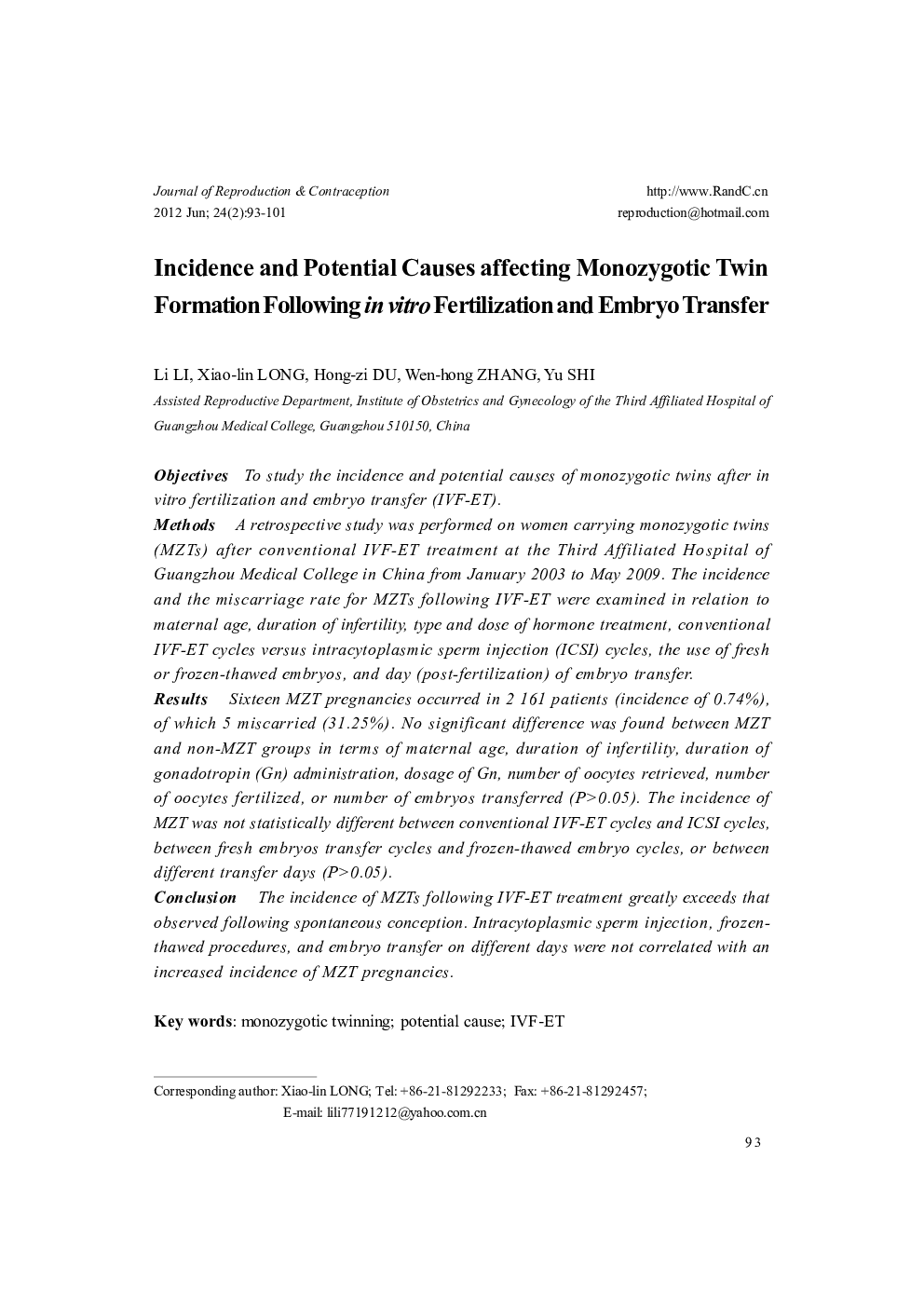| Article ID | Journal | Published Year | Pages | File Type |
|---|---|---|---|---|
| 3963957 | Journal of Reproduction and Contraception | 2012 | 10 Pages |
ObjectiveTo study the incidence and potential causes of monozygotic twins after in vitro fertilization and embryo transfer (IVF-ET).MethodsA retrospective study was performed on women carrying monozygotic twins (MZTs) after conventional IVF-ET treatment at the Third Affiliated Hospital of Guangzhou Medical College in China from January 2003 to May 2009. The incidence and the miscarriage rate for MZTs following IVF-ET were examined in relation to maternal age, duration of infertility, type and dose of hormone treatment, conventional IVF-ET cycles versus intracytoplasmic sperm injection (ICSI) cycles, the use of fresh or frozen-thawed embryos, and day (post-fertilization) of embryo transfer.ResultsSixteen MZT pregnancies occurred in 2 161 patients (incidence of 0.74%), of which 5 miscarried (31.25%). No significant difference was found between MZT and non-MZT groups in terms of maternal age, duration of infertility, duration of gonadotropin (Gn) administration, dosage of Gn, number of oocytes retrieved, number of oocytes fertilized, or number of embryos transferred (P>0.05). The incidence of MZT was not statistically different between conventional IVF-ET cycles and ICSI cycles, between fresh embryos transfer cycles and frozen-thawed embryo cycles, or between different transfer days (P>0.05).ConclusionsThe incidence of MZTs following IVF-ET treatment greatly exceeds that observed following spontaneous conception. Intracytoplasmic sperm injection, frozen-thawed procedures, and embryo transfer on different days were not correlated with an increased incidence of MZT pregnancies.
